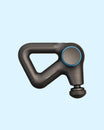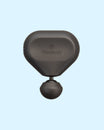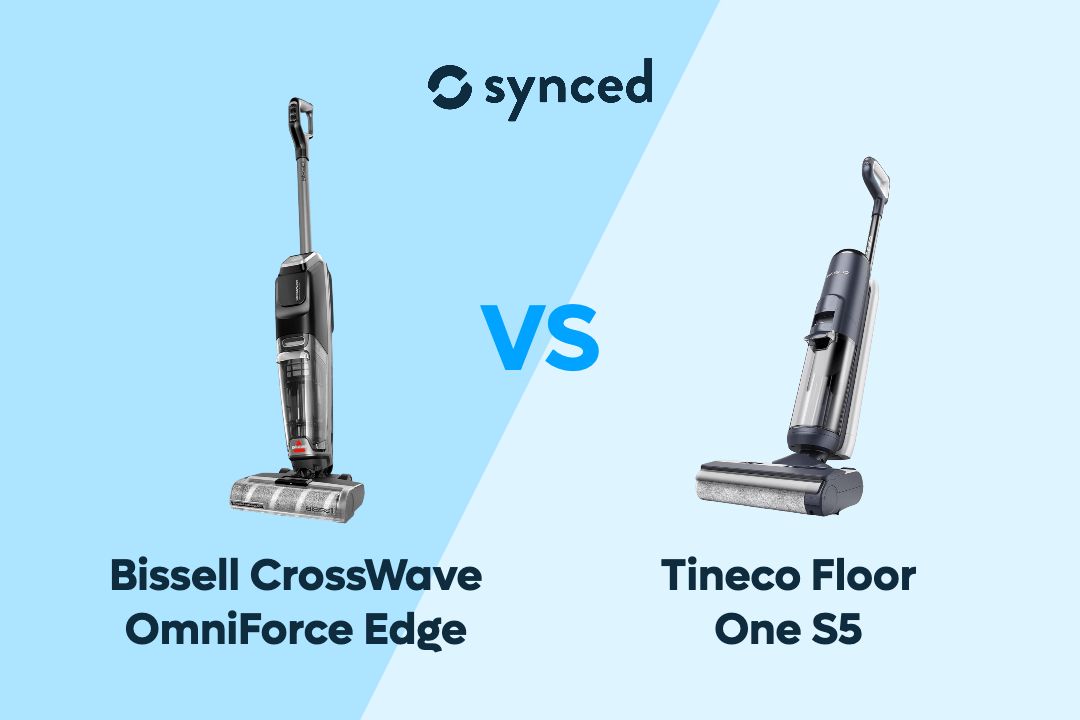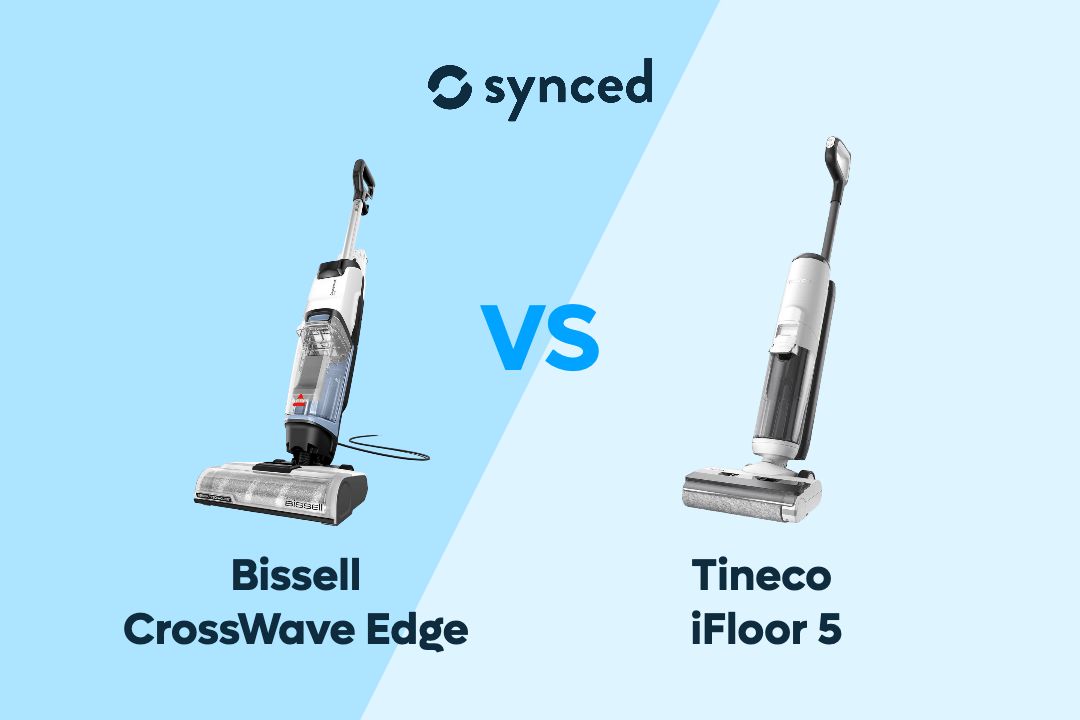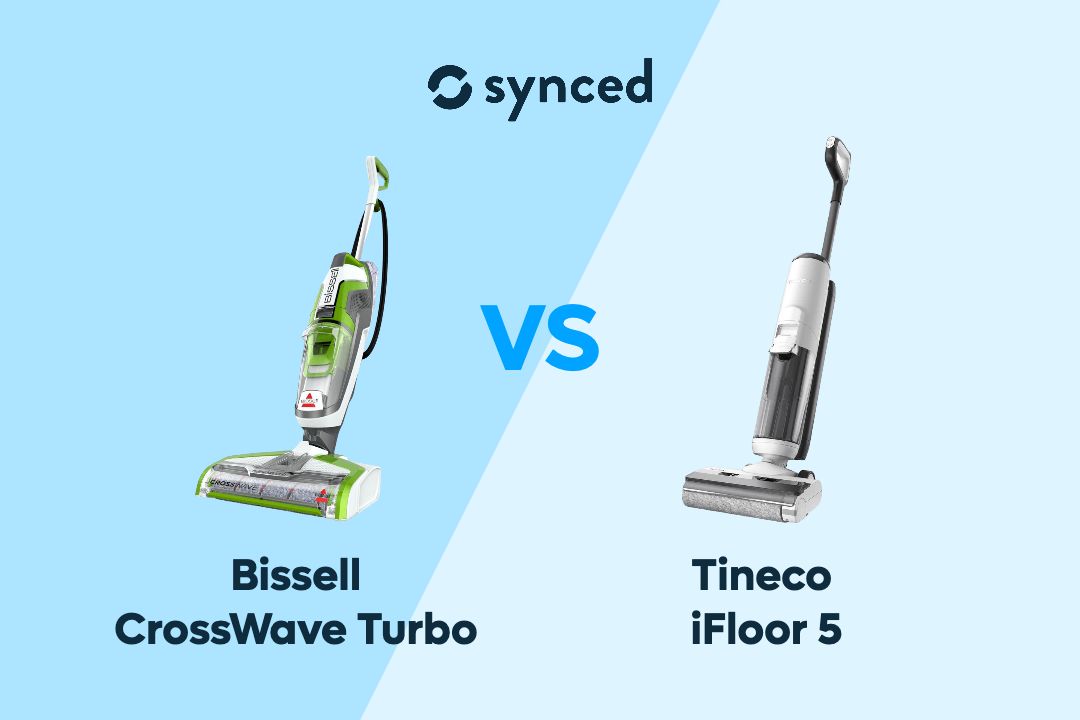Smart Home Beginner's Guide: How to Set Up Your Smart Home?
By Linus T.
Updated Jul 2023

Turning your home into a smart home can seem like a daunting task, but with the right guidance, it's easier than you think. A smart home is a house that uses internet-connected devices to remotely manage and monitor systems such as lighting, heating, security, and entertainment. By automating these systems, you can save time, energy, and money while enjoying enhanced convenience and comfort.
In this beginner's guide, we'll walk you through the process of understanding and setting up your smart home from start to finish. Whether you're tech-savvy or not, our guide hopes to make it simple and easy to learn more about the magic of smart homes.
Protocols
• Zigbee
• Z-Wave
• Thread
• Matter
Ecosystems
• Amazon Alexa
• Apple HomeKit
• Google Home
• Others
Core Devices
• Smart Switches
• Smart Plugs
• Smart Sensors
• Smart Lighting
• Smart Curtains & Blinds
• Smart Thermostat
Peripheral Devices
• Smart Home Speaker
• Smart Home Lock
• Smart Doorbell Camera
• Smart Home Camera
• Smart TV
• Wi-Fi Mesh System
Protocols: How do Smart Homes Work?

Samsung SmartThings
Smart home protocols are the backbone of any smart home system. They enable various devices to communicate with each other and with the central hub, allowing you to control your smart home from a single app or device. There are several protocols available in the market, but four of the most common ones that you'll hear about these days are Zigbee, Z-Wave, Thread, and Matter.
What is Zigbee?
Zigbee is a low-power wireless protocol designed for smart homes. It operates on the 2.4 GHz frequency band and uses mesh networking to extend its range. With Zigbee, you can connect a wide range of smart devices such as lights, sensors, thermostats, and locks.
What is Z-Wave?
Z-Wave is another wireless protocol used in smart homes. It operates on a different frequency than Wi-Fi and Bluetooth (908 MHz in North America) to avoid interference from other wireless signals. Z-Wave also uses mesh networking to extend its range and enables you to control up to 232 devices.
What is Thread?
Thread is a newer wireless protocol that's gaining popularity in the market due to its reliability and security features. It uses IPv6 technology for connectivity and has been designed specifically for low-power IoT devices like smart home sensors.
What is Matter?
Matter is an open-source protocol that aims to standardise communication between different smart home devices and platforms. It's backed by major players like Amazon, Apple, Google, Samsung SmartThings, and the Zigbee Alliance. With Matter-enabled devices, you'll be able to control your entire smart home ecosystem using a single app or voice assistant.
Ecosystem: What Are They & Which to Choose?
Smart home ecosystems are the glue that binds all your smart devices together. They allow you to control everything from a single app, set up automation rules, and tie in other services. Several smart home ecosystems are available in the market today, including Apple HomeKit, Amazon Alexa, and Google Home. Each of these ecosystems has its strengths and weaknesses, so it's important to understand what each one offers before deciding which one to choose. In this guide, we'll look at these smart home ecosystems and help you decide which one is right for you.
Amazon Alexa

Amazon Alexa
Amazon Alexa is one of the most popular smart home ecosystems on the market. It's easy to set up and use, and it supports a wide range of smart devices from various manufacturers. With Alexa, you can control your smart home using voice commands or the Alexa app on your smartphone.
One of the best things about Alexa is its compatibility with third-party skills. These skills are like apps that you can install on your Alexa device to extend its functionality. There are thousands of skills available for Alexa, ranging from entertainment and games to productivity and automation.
Alexa also offers routines, which allow you to automate multiple actions with a single command. For example, you could create a routine called "good morning" that turns on your bedroom lights, starts playing music, and reads out your calendar for the day when you say "Alexa, good morning."
If you're an Amazon Prime member, you can also take advantage of features like Amazon Music and Prime Video integration. You can use Alexa to play music or movies on your compatible devices without having to lift a finger.
Overall, if you're looking for a user-friendly smart home ecosystem with great compatibility and lots of customisation options, Amazon Alexa is definitely worth considering.

Echo Dot (5th Gen)
Made for Alexa Users
✓ Alexa voice assistant
✓ Improved audio quality
✓ Compact & versatile design
✓ Budget-friendly
Apple HomeKit

Apple HomePod Mini
Apple HomeKit is another popular smart home ecosystem that's designed to work seamlessly with Apple devices. If you're an iPhone or iPad user, you'll appreciate the ease of use and integration that HomeKit provides.
One of the standout features of HomeKit is its security. It uses end-to-end encryption to protect your data and prevent unauthorised access. You can also set up two-factor authentication for an extra layer of protection.
With HomeKit, you can control your smart home using Siri voice commands or the Home app on your iOS device. The app allows you to create scenes, which are a combination of different actions that can be triggered with a single command. For example, you could create a scene called "movie night" that turns off the lights, closes the curtains, and turns on your TV when you say "Hey Siri, movie night."
HomeKit is also compatible with a wide range of third-party smart devices from various manufacturers. However, it's important to note that not all smart devices are compatible with HomeKit, so make sure to check compatibility before purchasing.
If you're already invested in the Apple ecosystem and want a secure and easy-to-use smart home solution, then Apple HomeKit may be the right choice for you.

Apple HomePod Mini
Made for Apple Users
✓ Siri voice assistant
✓ Great sound quality
✓ Integrates with Apple devices
✓ Compact & versatile design
Google Assistant

Google Home
Google Assistant is a smart home ecosystem that's designed to work seamlessly with Google Home and Nest devices. It's easy to set up and use, and it supports a wide range of smart devices from various manufacturers. With Google Assistant, you can control your smart home using voice commands or the Google Home app on your smartphone.
One of the best things about Google Assistant is its integration with other Google services. You can use Google Assistant to access your calendar, set reminders, and even order food from your favourite restaurants. You can also stream music or videos on compatible devices without having to lift a finger.
Google Assistant offers routines, which allow you to automate multiple actions with a single command. For example, you could create a routine called "bedtime" that turns off all the lights in your house, locks your doors, and adjusts the thermostat when you say "Hey Google, bedtime."
If you're looking for a smart home ecosystem that works well with Google devices and services, has great compatibility with other devices, and offers lots of customisation options, then Google Assistant is definitely worth considering.

Google Nest Audio
Made for Google Users
✓ Google Home assistant
✓ Impressive sound quality
✓ Eco-friendly design
✓ Affordable price
Other Ecosystems

Tuya Smart Home
Apart from the popular smart home ecosystems discussed above, there are several other smart home platforms that you may want to consider. These ecosystems offer unique features and compatibility with a wide range of devices.
One such ecosystem is Samsung SmartThings. SmartThings offers a wide range of compatible devices, including sensors, cameras, and smart plugs. The platform supports both Zigbee and Z-Wave protocols, making it easy to integrate with other devices in your home. With SmartThings, you can create automation rules that trigger different actions based on specific conditions or events.
Another popular ecosystem is Xiaomi. Xiaomi's Mi Home app allows you to control various smart devices such as cameras, lights, and air purifiers from your smartphone. The app also allows you to set up automation rules based on specific triggers such as time of day or sensor readings.
Tuya is another ecosystem that's gaining popularity due to its ease of use and compatibility with a wide range of devices. Tuya offers a cloud-based platform that allows you to control your smart home from anywhere using the Tuya app. The platform also supports voice assistants like Amazon Alexa and Google Assistant for hands-free control.
Other notable ecosystems include Home Assistant, an open-source software platform that allows you to build your own DIY smart home system using Raspberry Pi or other similar hardware; Hubitat Elevation, a local-based platform that offers fast response times and high levels of privacy; and Wink, which offers an easy-to-use interface and supports a wide range of devices.
When choosing a smart home ecosystem, it's important to consider factors like device compatibility, ease of use, security features, customization options, and third-party integrations. By doing your research and choosing the right ecosystem for your needs, you can create a truly connected home that enhances your lifestyle while saving time and energy.
Next, we'll get into the main devices you'll need to set up your smart home.
Core Devices: The Main Components of a Smart Home
A smart home is made up of various components that work together to provide a seamless and convenient experience for the user. The core components of a smart home include smart switches, smart plugs, smart sensors, smart lighting, smart curtains and blinds, and a smart thermostat. Each of these components plays a crucial role in creating an intelligent and automated home environment.
Together, these core components make up the backbone of any modern-day intelligent home system. By integrating them seamlessly into your daily routine, you can enjoy enhanced comfort, convenience, and energy savings without having to lift a finger.
Smart Switches: Connecting the Dots Around The Home

Philips Hue Smart Switch
Smart switches offer remote control of lights and appliances through apps or voice commands, making it easy to turn them on/off from anywhere in the house. Smart wall switches can replace traditional light switches and provide benefits such as voice commands, remote control, automation, and energy usage monitoring. They integrate with other smart devices to optimise lighting and reduce energy consumption.
Upgrading to smart wall switches is an important step towards creating a fully functional and efficient smart home setup that offers convenience and energy-saving benefits.
Pro Tip: Before purchasing smart wall switches, consider compatibility with existing wiring.
Learn more about the Best Smart Switches available.
Smart Plugs: The Way to Automate Your Old Tech

Smart Plug
Smart plugs are an essential component of a smart home setup, offering the ability to transform ordinary appliances into intelligent devices. They operate wirelessly through internet connectivity and offer advanced features such as voice commands and power usage monitoring.
Smart plugs offer hands-free control, real-time power usage tracking, custom scheduling, built-in safety features, integration with other smart home products, and affordability. Some brands are compatible with both Alexa and Google Assistant platforms.
Pro Tip: Before purchasing a smart plug device, ensure compatibility with your home Wi-Fi network.
Learn more about the Best Smart Plugs available.
Smart Sensors: The Invisible Magic Layer

Aqara Smart Sensor
Smart sensors provide valuable insights into environmental conditions and can trigger other smart devices like lights or alarms when certain conditions are met. They come in different shapes and sizes and can be placed anywhere within your home to monitor temperature, humidity, light levels, and motion. For example, temperature sensors in each room can adjust the thermostat automatically, while motion sensors can turn on lights or sound an alarm when triggered.
Smart sensors communicate with other devices within the smart home ecosystem, providing convenience, comfort, and security to homeowners. They can send signals to smart thermostats to adjust the temperature when they detect a change in temperature in a particular room. Smart sensors play an essential role in keeping your smart home ecosystem running smoothly by offering valuable insights into the environment and triggering other devices to perform specific actions based on pre-set conditions.
Pro Tip: Before purchasing smart sensors, consider the type of scenarios you will require them for.
Smart Lighting: Switch Out Your Old Bulbs

Nanoleaf Essentials Lines
Smart lighting is a popular feature of smart homes that allows for customised lighting scenes and automated schedules. Smart bulbs and wall switches offer control over individual or groups of lights and can save money on energy bills.
Controlling smart light bulbs involves four simple steps: choose a compatible bulb, download the app, create custom routines, and control the lights. Grouping bulbs together can create distinct ambience and moods.
Smart light bulbs offer the flexibility to adjust colour, temperature, and brightness levels through voice commands or mobile apps. They can generate various colours and effects to create different moods in a room. Smart wall switches provide additional control without replacing all ordinary bulbs.
Pro Tip: Before purchasing smart light bulbs, ensure compatibility with the current setup for seamless integration.
Learn more about the Best Smart Lighting available.
Smart Thermostat: Stay Comfortable

Smart Thermostat
A smart thermostat regulates temperature automatically and learns your preferred settings to save energy while keeping you comfortable. It provides convenient control of your home's heating and cooling systems from anywhere, monitors temperature and humidity levels, and supports advanced features such as motion detection, remote temperature sensors, and voice control.
Integrating smart devices like lights and curtains with your smart thermostat can optimise energy efficiency in your home, leading to enhanced automation and minimising unnecessary energy consumption.
When switching to a smart thermostat, it's important to consider installation requirements such as wiring compatibility, wireless connectivity, HVAC system support, and selecting the right model and brand. Professional help is recommended for installation due to the handling of live electrical equipment. Smart thermostats offer a modern solution for efficient home temperature regulation, providing greater control and convenience while saving energy.
Pro tip: Consider purchasing a smart thermostat that is compatible with your HVAC system and wiring.
Smart Curtains & Blinds: Let There Be Light

Smart Blinds
Smart curtains and blinds offer a new level of convenience and control for smart homes. They can be opened or closed remotely through an app or voice commands, making them ideal for people with mobility issues or hard-to-reach windows. You can program them to open and close based on your preferences or pre-set schedules, ensuring privacy and security in your home.
Smart curtains and blinds also have energy-saving capabilities, as you can program them to let natural light into your home during the day and keep your home cooler by closing them during the hottest parts of the day. They integrate seamlessly with other smart devices in your home, such as smart thermostats and lighting systems, providing a comfortable and convenient experience for homeowners.
Pro tip: Before purchasing smart curtains and blinds, consider compatibility with existing window treatments and hardware.
Learn more about the Best Smart Curtains & Blinds available.
Peripherals: Other Smart Home Integrations
In addition to the core components of a smart home, there are several other smart home peripherals that can enhance your home automation experience. These peripherals include smart home speakers, smart locks, smart doorbell cameras, smart home cameras, smart TVs, and Wi-Fi mesh systems.
Smart Home Speaker: Control Your Home With Your Voice

Smart Home Speaker
Smart home speakers are voice-activated devices that use advanced voice recognition technology to perform various tasks such as playing music, answering questions, and controlling smart devices in your home. They provide a hands-free experience that enhances the convenience of your daily routine. Popular brands include Amazon Echo, Google Nest, and Apple HomePod, each with unique features and capabilities.
In addition to controlling smart home devices, smart home speakers also provide entertainment features such as playing music, podcasts, and audiobooks, and can display visual information such as weather forecasts and news updates on some models. With seamless integration with other devices in your home, they offer a versatile way of controlling your living space using voice commands and enhancing the convenience of your daily routine.
Pro tip: Which ecosystem you choose, will more or less determine which smart home speaker you will get.
Learn more about the Best Smart Home Speaker available.
Smart Home Lock: Unlock Your Home With Ease

August Wi-Fi Smart Lock
Smart locks are a convenient and secure technology that provides keyless entry to your home through a mobile app or voice commands. They offer advanced features like geofencing and can be integrated with other smart home devices such as cameras and doorbells for enhanced security.
With smart locks, you can remotely lock and unlock your doors, create unique access codes for different people, and monitor who enters and exits your home. Some models can even detect when you're approaching your front door and unlock it automatically. This provides a higher level of convenience and flexibility compared to traditional locks. By integrating with other smart home devices, smart locks offer an added layer of security that enhances the safety of your living space.
Pro tip: Before purchasing a smart lock, consider compatibility with your existing door hardware and the level of security you require.
Learn more about the Best Smart Home Lock available.
Smart Doorbell Camera: See Who's At Your Front Door

Ring Video Doorbell 4
Smart doorbell cameras offer advanced video surveillance of your front door and allow you to see who's at your door from anywhere using an app on your smartphone. They have features such as motion detection and two-way audio communication, providing enhanced convenience and security compared to traditional doorbells.By sending alerts when someone approaches your door or when motion is detected, smart doorbell cameras provide added security to your home. They can also be integrated with other smart home devices, such as smart locks and smart lights, for an even higher level of security. Overall, smart doorbell cameras are a valuable addition to any smart home ecosystem, offering convenience and security to homeowners.
Pro tip: Before purchasing a smart doorbell camera, ensure compatibility with your home Wi-Fi network and the devices you want to integrate it with.
Learn more about the Best Smart Doorbell Camera available.
Smart Home Camera: Keep An Eye On Your Home

Google Nest Cam (indoor, battery)
Smart home cameras provide advanced video surveillance of your living space and can be monitored remotely using an app on your smartphone. They have features such as motion detection and event alerts, providing enhanced security to your home.
By integrating with other smart home devices such as smart locks and smart lights, smart home cameras offer a higher level of convenience and security to your daily routine. They are a valuable addition to any smart home ecosystem and provide an added layer of safety to homeowners who prioritise security.
Pro tip: Before purchasing smart home cameras, consider the number of cameras you will need and the type of features you require.
Learn more about the Best Smart Home Cameras available.
Smart TV: Enhance Your Entertainment

Smart TV
Smart TVs offer internet connectivity and streaming services of movies, TV shows, and other content. They also have customisable settings and can be integrated with other smart home devices for enhanced entertainment experiences.
By providing a seamless and personalised entertainment experience, smart TVs enhance the convenience and enjoyment of your daily routine. With advanced features such as personalised recommendations and control over picture and sound quality, they offer a higher level of flexibility and control compared to traditional televisions. Smart TVs are a valuable addition to any smart home ecosystem, providing entertainment and convenience to homeowners who prioritize personalized and immersive entertainment experiences.
Pro tip: Before purchasing a smart TV, ensure its compatibility with existing smart home devices and services.
Wi-Fi Mesh System: Ensuring Connectivity All The Time

Orbi Wi-Fi Mesh
A Wi-Fi mesh system is a technology that uses multiple access points to provide seamless internet connectivity throughout your home. It eliminates dead zones and improves internet speed and reliability, resulting in uninterrupted internet connectivity.
With advanced features such as remote management and integration with other smart home devices, Wi-Fi mesh systems offer a higher level of convenience and flexibility compared to traditional routers. They are a valuable addition to any smart home ecosystem, providing advanced internet connectivity and enhanced functionality to homeowners who prioritise seamless internet connectivity and ease of use.
Pro tip: When purchasing a Wi-Fi mesh system, consider the size of your home and the number of devices that will be connected to the network.
Recommended Smart Home Devices
So Where Will You Begin?

Apple HomeKit
Your smart home can be as simple or complex as you want it to be, with a wide range of smart devices available to fit your specific needs and preferences. From smart thermostats that regulate temperature automatically to smart sensors that monitor environmental conditions, the possibilities are endless.
By integrating these devices into a cohesive ecosystem, you can create an intelligent and convenient living space that enhances your daily routine and saves energy. With features like voice control, custom routines, and remote access, your smart home can provide a level of convenience and control that traditional homes cannot match.
Whether you're just starting or looking to expand your existing setup, there's never been a better time to embrace the world of smart homes. With so many options available, finding the right combination of devices for your unique needs has never been easier. So why wait? Start building your dream smart home today!
If you like to read more on Smart Homes, check out our other relevant guides here:
The Best Apple HomeKit Devices
Don't miss out on tech
Subscribe to our newsletter to stay up to date on the latest tech trends and guides on the best gadgets around.


